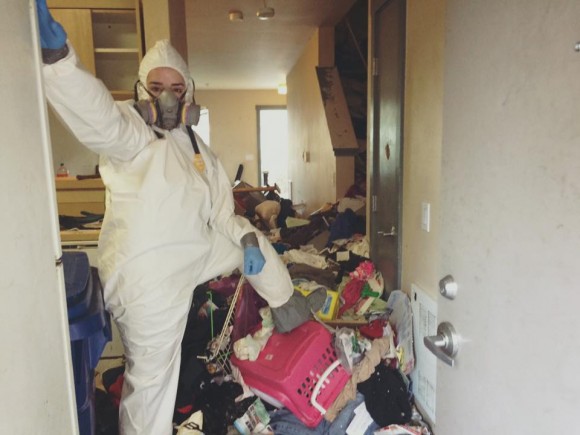Every home has an equilibrium. It must be tended to. Fostered. Nurtured. Secured.
Clutter, being vastly prominent in our overly-consumeristic and material-based society, is a threat to the healthy equilibrium of your home because it not only affects the home, but the people who reside in it. Most of us innately understand the adverse effects of clutter and most of us want to get rid it. But how do we actually do it?
When we have too much clutter, we know that among the innumerable side effects it has, these are a few of them: Clutter increases stress, decreases productivity, drains your wallet, can be harmful to your health, and jeopardizes relationships with loved ones. Why is it so hard to alleviate and why does it sometimes keep coming back?
These decluttering tips will help you see clutter for what it really is, understand it’s adverse effects on your home and life, and help you say “goodbye” to it for good. And I mean for good.
See Clutter For What It Is
Clutter is just the result of too many unmade decisions.
I address extreme hoarding cases. All of the things that make up a hoard are unmade decisions. The good news is, is that you have the will and power to make a decision.
I encourage my clients in my first few sessions with them to close their eyes for about 30 seconds and take a few deep breaths. Then, when they open their eyes, I’m there standing beside them ready to make decisions with them that have crippled them to the point of paralysis.
I tell them to look around the room that we are about to address with a new set of eyes, the newest eyes they can muster up in that moment. I then take one thing at a time and ask three questions:
“What is it?”
“What is it for?”
“And where does it go?”
Start in one room, with one item at a time, and ask yourself these questions. Make the action then and don’t put it off. Either keep it, trash it, recycle it, donate it, gift it, or sell it. These are the categories that will aid greatly in the decluttering process.
Remember, we use things, not people. We love people, not things. When our thinking changes around our possessions and understand that they’re only things for us to use at their expense, we find solace and freedom from the binding and the perceived value that we placed on that possession.
One Thing In, One Thing Out.
When you bring one thing inside the home—a new jacket, a new pair of shoes, a portable heater, a printer, or whatever—one thing should go out to replace that item. When you introduce a newly purchased item you determined that your home needed, remove another possession that no longer serves you. Trash it, recycle it, donate it, gift it, or sell it. Don’t wait. Make a decision and implement it immediately. This practice will keep the equilibrium of your home constantly balanced.
What Can I Take Back?
Let’s be honest, things are money.
Many of my clients have a lot of anxiety surrounding money and explain to me that the reason they keep things is because things represent money, and if they discard things, it’s like throwing away money. I understand this. We all need money to survive and security is a huge reason we may hold on to clutter, to feel more secure surrounded by things of value.
I frequently walk around my house viewing things as money. I know, I know. It’s strange, but it works! I look at something I bought, and think, “I remember this costing “x” amount. Have I even used this? No? Okay. Is it within the store’s return policy? Do I have the receipt? If I don’t have the receipt, can I still return it and the store can look it up by my payment method? Are none of these an option? Okay. Can it bless someone else then, so it doesn’t take up precious real real estate in my home?”
When we understand that things cost money and that potentially unhealthy habits of spending contributed to our clutter, this is a simple method to reclaim even a minuscule amount of the finances that were lost because of our spending.
Pick one thing in your home at a time, maybe something you haven’t seen in a while, and really look at it. With your new set of eyes ask, “Am I using this? Can I consume it? Can I wear it? Can I put it in my hair? Can I decorate with it? Can I return it within the appropriate time frame if its clutter and I’m actually not using it like I thought I would?”
This is not only a great method for your wallet, but also for our planet. It gets us out of the cycle of consuming and purging when we are in control of our possessions and have liberty over the exact inventory of our homes.
This is freedom. Knowing the truth about our home and ourselves, and in turn, being set free.



